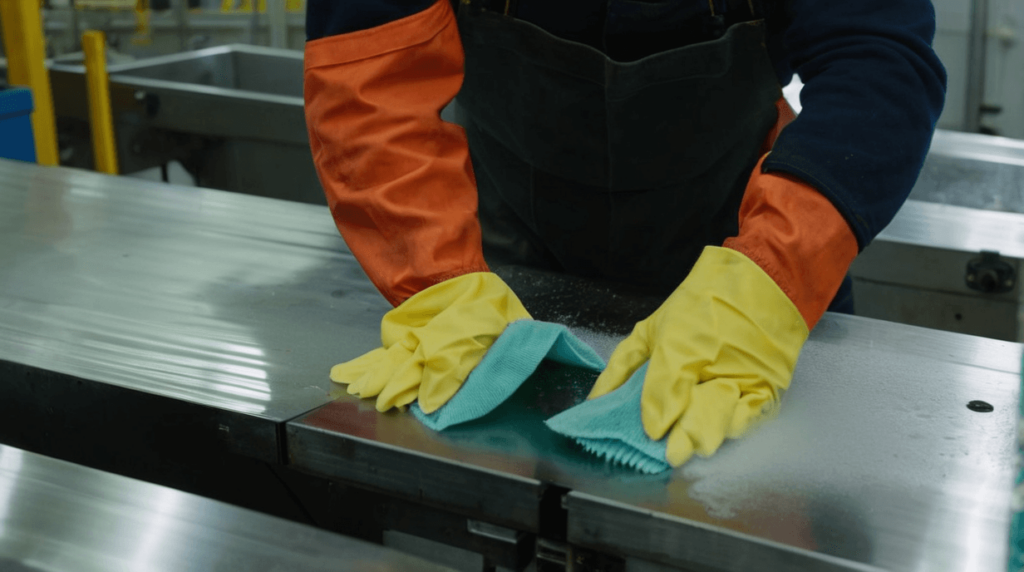Use a pump or vacuum cleaner to remove the waste cutting fluid. After that, clean any leftover residue, waste oil, and other pollutants in the tank. If possible, flush the cutting fluid tank with water or wipe it down with an old cloth.
After the rear water tank is cleaned up!
To sterilize with a bactericide water solution, first check the waste cutting fluid. If it has a bad smell, proceed. Mix the bactericide with water at a ratio of 1:100. For example, use 1.5 KG of bactericide for 150 KG of water. Pour the solution into an empty cutting fluid barrel. Next, pump it into the cutting fluid tank. Finally, turn on the equipment’s cutting fluid circulation button to activate the bactericide.
First, turn on the cutting fluid circulation button. Next, sterilize the machine and pipeline with the fungicide water solution. Let it sit for about five minutes. Then, pump the solution back into the barrel. You can recycle the fungicide water solution for 5-10 uses.
Prepare new cutting fluid according to the requirement of using concentration and pump it into the cleaned cutting fluid storage tank of the machine. Due to the leakage of rail oil from the equipment, the rail oil is mixed into the cutting fluid, resulting in black floating oil stains on top of the cutting fluid. Please clean the upper layer of oil on time to extend the service life of the cutting fluid.
The machine’s long downtime causes the cutting fluid to lose mobility and oxygen. This creates a perfect environment for anaerobic bacteria to thrive. As a result, you may notice deterioration and unpleasant odors.
When the equipment machine needs to be stopped for more than three days, please maintain it according to the following methods:
Method 1: You can pump out the cutting fluid of the machine, and use it to add the other machines that are normally started.
Method 2: Before stopping, add 100ML of biocide to the machine. Then, circulate the cutting fluid for five to ten minutes. This helps ensure each device has enough antimicrobial ingredients. It also protects the cutting fluid from deterioration.
Every two to three days, run the machine cutting fluid circulation for one to two hours. This adds enough oxygen to the fluid. Without oxygen, anaerobic bacteria can grow and harm the cutting fluid.


